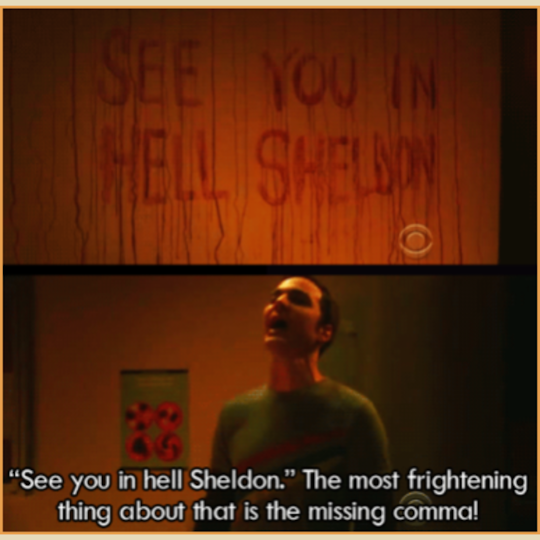Welcome to another pivotal post! This edition is all about where commas should be used in your day-to-day lived. You’ll also get to find out the true origins of the name of my blog! #muchexcite.
Just like my post on apostrophes, this post is another essential one! I’ll try to keep it as concise as possible, however, I will be using several examples to illustrate my points and also show you what not to do!
Contents:
Where are commas used?
Commas are used for a variety of things. While I’m not going to delve into every single scenario, I will certainly cover the essentials!
When separating adjectives
- Yesterday was a wet, miserable morning
- She was a friendly, polite waitress
When you use more than one adjective to describe something, separate it with commas. In a sense, the comma takes the place of an and:
- A wet and miserable morning
- A friendly and polite waitress.
If you don’t use a comma here, here’s what your sentences will look like:
- A wet miserable morning
- A friendly polite waitress.
Doesn’t look right does it? What’s friendly polite? So, if you can put the word and in between the two describing words, use a comma. However, be careful of sentences like this:
We missed the hot, summer days
This example is actually incorrect. We missed the hot and summer days? That’s not quite right… In this case, hot is describing summer, not the days.
We missed the hot summer days.
Let’s look at another incorrectness…
The funny, clever, comedian
The funny and clever and comedian? No that doesn’t sound right… Both funny and clever are describing the comedian, therefore:
The funny, clever comedian.
Screw it; let’s give one final example of this:
Lyle Lanley wore a brilliant, red blazer.
If brilliant was describing the blazer, there would be nothing wrong with this sentence. A brilliant and red blazer. However… if brilliant is describing the colour red, and you don’t think the blazer is too crash hot, well then you mean:
Lyle Lanley wore a brilliant red blazer.
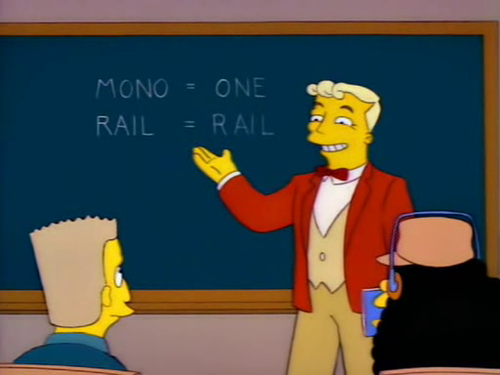
When listing items
When writing about a list or when separating things in a series, use commas. This type of usage is very similar to what we’ve just seen with separating adjectives:
- For dinner, I had steak, vegetables and chips
- In my family I have a mother, father, two sisters, one brother and a dog
- On our Europe trip, we went to France, Italy, Greece, Spain and England.
Just like we saw earlier, the comma takes the place of an and. We use a comma because it would be too strange to keep saying and. France and Italy and Greece and Spain and England. Bit of a mouthful isn’t it?
The serial comma
Now, you have most likely been told at some stage that you don’t need to put a comma before the word and. This is mostly true, however, there are times where you do need it to remove ambiguity. There is a term for this and it’s called the serial comma or the Oxford comma. To demonstrate, let’s slightly modify that first example I gave above:
For dinner, I had steak, vegetables, chips and ice-cream for dessert
Chips and ice cream for dessert? Yuck! To remove the ambiguity, you would put a comma in front of the and to read:
For dinner, I had steak, vegetables, chips, and ice cream for dessert.
As you can see, this makes the separation clearer and your sentence now makes a lot more sense. Ice cream was for dessert; not chips and ice cream! Let’s give another example:
My biggest influences in my life are my parents, Superman and Dr Phil
As you can read, without the comma, it reads as if Superman and Dr Phil are your parents. If you’re lucky enough for that to be the case then fair enough, you don’t need the comma before and. However, I suspect this might not be the case… Therefore, the sentence should read:
My biggest influences in my life are my parents, Superman, and Dr Phil.
As you can see, the comma makes a world of difference here. Your parents are your biggest influence, as is Superman, as is Dr Phil.
You may also be familiar with this famous internet example:


Here’s what your writing would look like without commas. Cooking her family and her dog? Wow. It should say ‘cooking, her family, and her dog’. However, do not believe everything you read on the internet as this photo is a fake, but it serves as a good example nonetheless.
And another offender of the serial comma. A serial offender? Anyway… Have a read from about halfway down. ‘It was touch and go…’ The article reads as if the two women lost their loved ones through Knox Council, which I’m guessing is not what the writer’s intentions were. It clearly should say ‘two women who have lost loved ones through suicide, and Knox Council…’ to make it clear these these two are separate entries that the continued lobbying was done by.

Now, there’s nothing wrong with using the comma before the and, even when there is no ambiguity:
In my family I have a mother, father, two sisters, one brother, and a dog.
See? Nothing wrong with that at all. It really just depends on your personal preference, or maybe a style guide if you’re bound by one. But as is the case with personal preferences: be consistent! Either use the serial comma in your writing, or don’t. My personal preference is to only use it to resolve ambiguity. Having said that, you could argue that without the comma before and, your sentence may well lead to ambiguity regardless and readers will make their own judgements. So look, just make up your own mind on this one as there is no right or wrong answer. If you think there’s a chance of perceived ambiguity, just go ahead and use that comma! That’s my advice for the day.
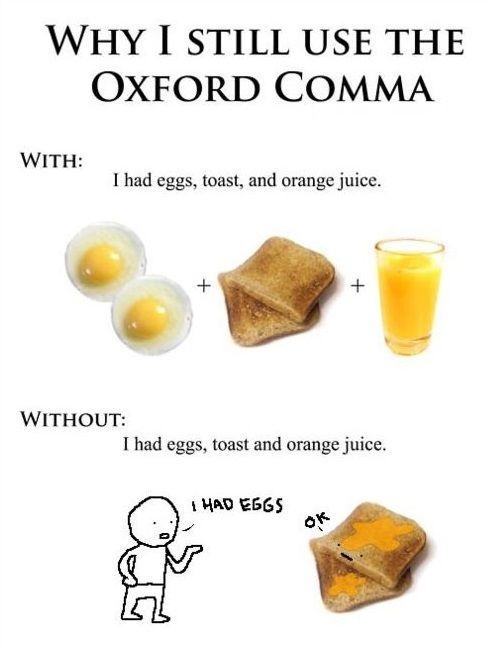
We’re going to talk more about ambiguity in just a second so hold on tight!
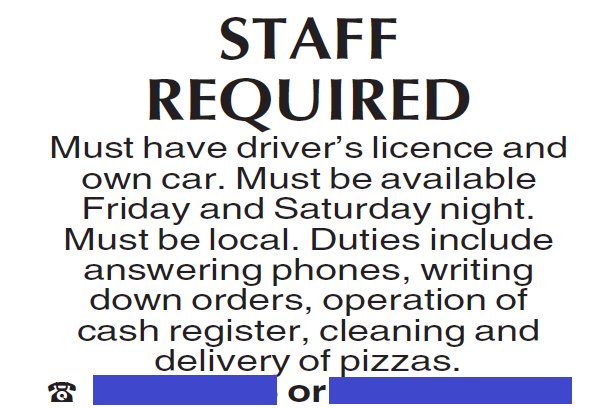
Here’s another awesome example of why the serial comma is important! As you can read, it clearly needs a comma before that final and to make a distinction between ‘cleaning’ and ‘delivery of pizzas’. As it reads, the suitable applicant for the job needs to be able to clean pizzas and that just sounds a bit odd!
Before a place name, title, or more information
When you’re giving more information about something, e.g. a place name or some sort of title, and are omitting words, a comma will fill in the gaps:
- John Smith, Queensland
- I visited London, England, last month
- John Howard, former Prime Minister of Victoria.
Here we’re saying John Smith from Queensland, I visited London in England last month, and John Howard is a former Prime Minister of Australia.
Think of the beginning of a game show and the contestants are being introduced. It will have their name and where they’re from. Or at the end of a news report on TV, the reporter will say something like “Jane Smith, Channel Nine News”.
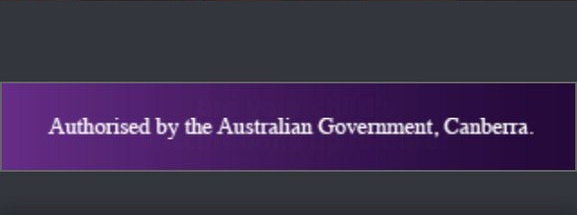
Here’s an example of where a missing comma has proved fatal. This was part of some sort of drink-driving campaign and to think about others and the consequences of your actions. Now, the comma before 18 works well. Alisha Longmore who is/was 18. However, one can only assume there’s also meant to be a comma before 2000 to mean she was killed in the year 2000 (I’m assuming as a result of someone drink-driving). However, somehow this comma has been missed and the ad reads as if she has killed 2000 people which is probably not something you want to promote on the internet.
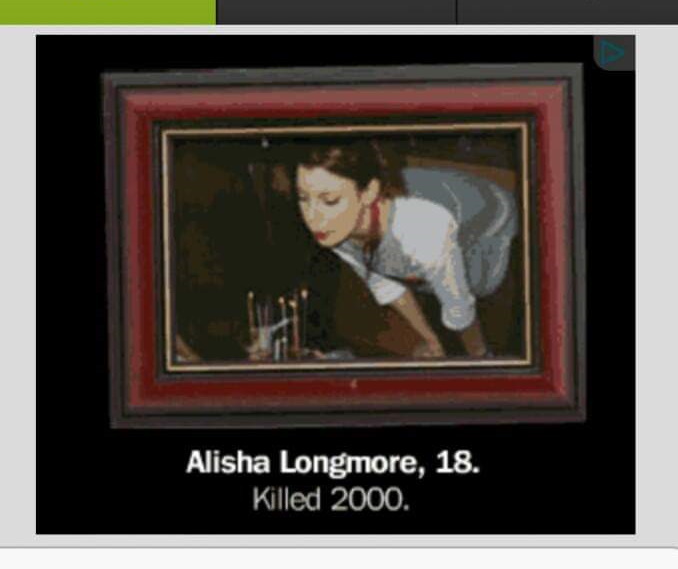
When pausing
When you want your readers to pause a little, use a comma. See? Perfectly executed.
- In order to cook this dish, you must first prepare the following ingredients
- On the weeks leading up to Christmas, the shops are packed!
Try reading those sentences without the comma. Not only does it make your sentence uncluttered, it also acts as a visual as to where the sentence is going, similar to the way a full stop makes it clear that that’s the end of a sentence. Be careful though! Don’t just use commas as a way of breaking up your writing! We’re going to look at this in just a second.
To remove ambiguity
I saved the best for last. This is the major one and it often, often, gets missed on social media, resulting in some sometimes funny and/or ambiguous sentences!
When you state something or have some sort of directive, and address it to someone or a group of people, a comma makes it clear who your audience is.
Take a look at these examples and I’ll add the corrected version underneath each one.
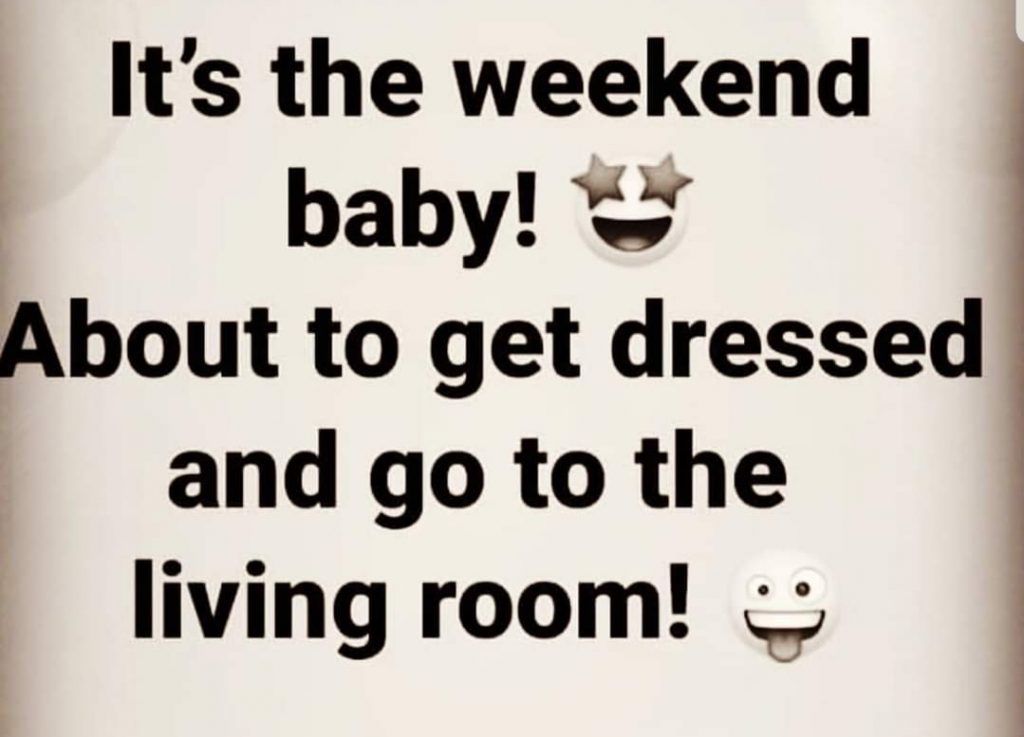

Call me, sweetheart
Call me, honey

Can you see how using a comma makes it clear who we’re talking to? In the second image, which is most likely a fake conversation, the guy is merely following instructions. She asked him to call her baby so he did! And somehow he’s the idiot… In the first example, we’re saying to our audience (who we’re referring to as ‘baby’) that it’s the weekend. We’re not showing a photo of a weekend baby. With the last one, it’s saying not to do any unprotected sex guys. But I guess doing a protected sex guy is just fine. What are sex guys exactly? Maybe don’t google that one.
A comma can completely change the meaning of a sentence. Here’s an example I thought of to demonstrate this:
What did you get Dad?
Imagine a boy asking his Mum what she bought for Dad for Christmas.
What did you get, Dad?
This second question could be a boy asking his Dad what he got for Christmas, or, what he bought for someone else.
Can you see why I saved this one for last? Let’s look at a couple more examples:
Incorrect
- You know how babies are made right?
Correct
- You know how babies are made, right?
Explanation
The incorrect sentence is asking about making a baby right, as opposed to making a baby wrong. We’re asking a question saying you know how babies are made, don’t you?
- Gather round children
- Gather round, children
The first one is saying to collect children who are round. What you probably meant was that you are asking the children to gather around.
- Time to take your boots off Bill
- Time to take your boots off, Bill
Poor Bill. People are always putting their boots on him. With the second one though, we’re telling Bill that it’s time to take off his boots.
- Party on dudes!
- Party on, dudes!
The first one is saying to have a party on top of dudes. What you’re most likely meaning is that you’re telling your friends to party on!
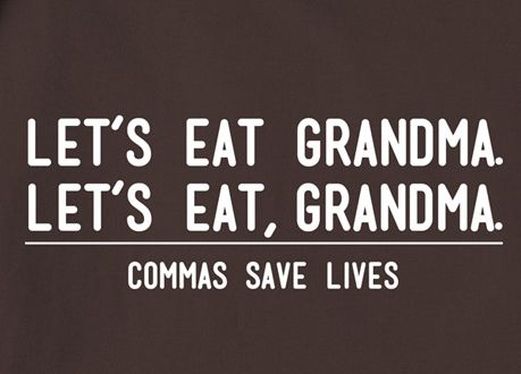
Now, another famous internet example which also proves missing commas can be fatal. Are you telling people to eat Grandma or are you telling Grandma to come eat cause dinner’s ready? Probably that second one I’m thinking. And now you know where the name of my blog comes from! I turned this internet example around slightly and modified a word. Okay, okay, I may have had help! Now, what you probably didn’t know is that there’s also a band who clearly liked this example so much that they named themselves after it! Clever.
I could be here forever with examples, but I’m sure you get the point. When you’re giving a directive, or making a statement and addressing someone, use a comma to make the distinction clear. Think about the differences in meaning between
Enjoy, guys
~ and ~
Enjoy guys
What’s up, Harry?
~ and ~
What’s up Harry?
Don’t ever change, Ruth
~ and ~
Don’t ever change Ruth
You don’t understand, Pete
~ and ~
You don’t understand Pete

If you want more examples like this, click this link. It even contains the Rachael Ray example above. There are a couple that aren’t quite comma related mind you, but the majority are.
Where are commas not used?
Commas are often incorrectly used to join two independent clauses together. This is known as a comma splice:
- I got up late this morning, I didn’t have time for breakfast
- I love playing sport, it’s my favourite activity
- My sisters and I went to the beach, we had a great time.
In case you don’t know what a clause is, it’s basically a simple sentence, i.e. a sentence which can stand alone. Using a comma in these two examples would be incorrect because each clause can stand alone. There are several ways to correct a comma splice, depending on the sentence. You can reword the sentence:
I got up late this morning and didn’t have time for breakfast
You could use a semicolon:
I love playing sport; it’s my favourite activity
You could even use a colon, depending on the sentence.
We won’t get to the shops before they close: it’s nearly half past five
Alternatively, you could simply use a full stop after each sentence. Sure, your sentences may be slightly bland, but it would be perfectly acceptable.
Note: We will cover colons and semicolons in a future post so stay tuned! – Three ways to improve your marketing.
Very often when scrolling through your Facebook feed, you’ll read big chunks of text, cluttered with commas. While commas are used for brief pauses, as read above, they are not used to separate sentences: this is what full stops are for!
This sign, taken from a gym, went one step further and didn’t include any punctuation at all!
As you can see, a comma alone would not cut it. It needs a semicolon in there to read ‘Take care of your body; it’s the only place you have to live’.

And that’s it for now. As you can see, the omission of a comma can certainly lead to some confusing sentences! Coming soon: when to use colons and semicolons. Once you’ve mastered semicolons, you’re pretty much a Jedi, so stay tuned for that one!
If you enjoyed reading about commas, check out my post on apostrophes – Apostrophes and their misuse 101.

